
OEM means original equipment manufacturer. If a company designs and manufactures electronic products and owns the brand of the manufactured products, it is an OEM.
OEMs have the product brand and design and produce their electronic products. However, they typically outsource the manufacturing and assembly of printed circuit boards (PCB) and enclosures to an ECM (electronic contract manufacturer), usually, an EMS (electronic manufacturing services) provider.
OEM PCB assembly refers to PCB manufacturing and assembly for an OEM who designs and sells electronic products.
In this article, you'll understand the working mode and process of OEM PCB assembly, and what benefits it can bring out to OEM companies.
Part 1: What is OEM PCB Assembly
OEM PCB assembly involves outsourcing the manufacturing and assembly of the PCBs to a specialized EMS provider.
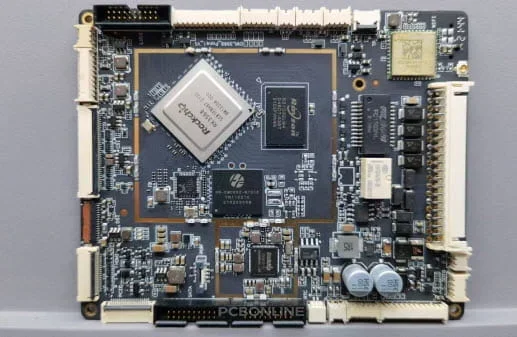
In OEM PCB assembly, the OEM company typically draws the schematics, selects the components, designs the PCB, and specifies the requirements for the PCB assembly.
And then the OEM entrusts the PCB manufacturing and assembly process, including component sourcing, to an electronic contract manufacturer, typically an EMS provider.
In the OEM PCB assembly working mode, the OEM company and EMS manufacturer collaborate tightly to bring electronic products to market.
The OEM creates products that are branded and sold under their brand, but they rely on external manufacturing partners, such as EMS providers to handle the actual PCB fabrication and assembly.
The EMS manufacturer provides a wide range of services, including PCB fabrication, PCB assembly, component sourcing, value-added services, testing in the post-assembly stage, box-build assembly, and logistics.
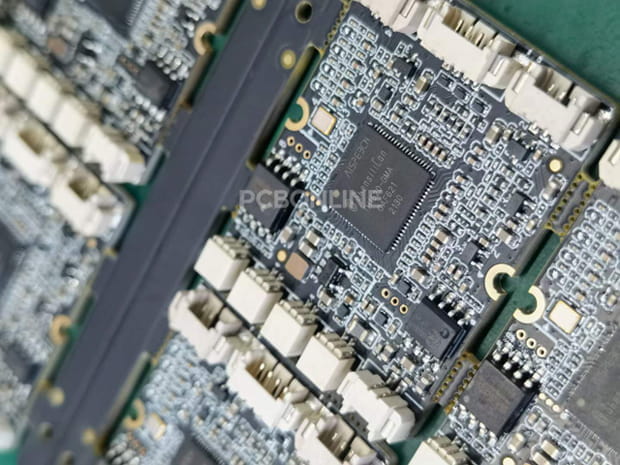
If you choose an EMS provider with R&D capability, such as PCBONLINE, you can receive co-R&D in early development. PCBONLINE can help reduce the fabrication price of the PCB assembly project with an optimized PCB design and substitute components at lower prices.
Overall, in the context of OEM PCB assembly, the OEM company focuses on design and marketing, while the EMS provider handles the electronic manufacturing process, especially PCB fabrication and assembly.
Part 2: OEM PCB Assembly Process
According to the requirements of an OEM, the OEM PCB assembly process involves PCB manufacturing, PCB assembly, and a series of post-assembly services and testing.
Here's the OEM PCB assembly process:
- Design and Documentation
The OEM provides the necessary Gerber, drill file, BOM (bill of materials), and pick-and-place file. If the PCBA project needs IC programming, the OEM also needs to provide an IC programming file.
The EMS provider checks the design files and documentation to understand the PCB specifications, component placement, and other fabrication requirements.
And the CAM and PCBA engineers from the EMS company can complete the engineering, such as the design for manufacturing (DFM), testing (DFT), assembly (DFA), and excellence (DFX).

- PCB Fabrication
The PCB fabrication process varies according to different PCB materials, layers, holes, circuitry complexity, line width/space, and components. The general process of multilayer PCBs is below.
The EMS provider cleans and cuts the laminate materials to be the required size of the PCB panel. The following PCB fabrication steps include inner layer circuit generation (circuit imaging and etching) > lamination > drilling > PCB hole copper plating > outer layer circuit generation > circuit image plating and outer layer etching > automatic optical inspection (AOI) > solder mask and silkscreen > surface finish > profiling > electrical test and final quality control > packaging and delivery.
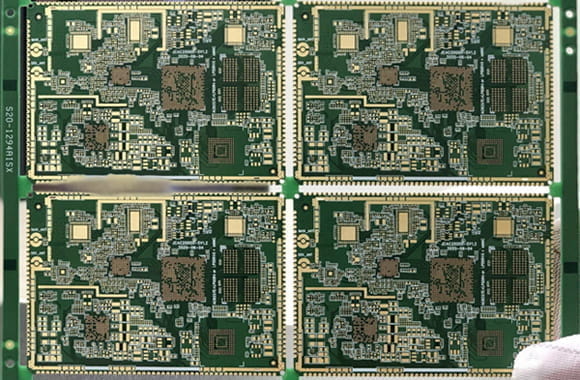
During PCB fabrication, the SMT stencils for PCB assembly are also manufactured. And the component procurement also starts when the PCB design is put in fabrication.
- Component Procurement
Component procurement is called component sourcing. The EMS provider purchases all the active and passive components specified in the BOM and ensures the quality.

The component price takes the largest portion of the cost and turn-around time of the OEM PCB assembly.
From the EMS provider PCBONLINE, you can have cheaper options with substitute components made in China for some parts. Relying on rich experience and expertise, PCBONLINE ensures the substitute components they suggest have the same functions and quality.
Besides, relying on the EMS PCBA factory that has run for a dozen years, PCBONLINE can take part in co-procurement from the original component factory with other large EMS to reduce the component cost.
- SMT Assembly
Surface Mount Technology (SMT) refers to placing components onto the PCB pads. The SMT components have short pins and are called surface-mount devices (SMD).
SMT assembly is automatic from PCBONLINE.
On an SMT line, a feeder sends the PCBs one by one into a solder paste printing machine, where a scraper presses the solder paste through the holes of an SMT stencil to "print" on the PCB pads.

Then the PCB goes through a solder paste inspection (SPI) machine to ensure the solder paste on the PCB pads is qualified for soldering.
Next, the PCB goes into two automatic surface-mount machines - high-speed and functional SMT machines, where the smaller and larger SMDs are placed on the PCB pads according to the pick-and-place file from the OEM.
If there's any BGA in the SMDs, the PCBA goes through an x-ray inspection to ensure the solder balls are qualified for soldering.
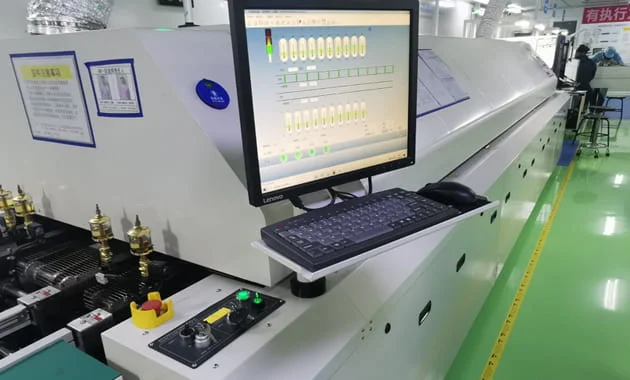
Then, the PCBA goes into a reflow soldering oven to preheat and bake so that the solder and PCB pads form intermetallic compounds (IMC). From PCBONLINE, the reflow ovens have 10 temperature zones and can adjust temperatures for all types of complex PCB assembly.
Last, the PCBA goes past an AOI machine to ensure no surface defects happen, including bridges, tombstones, solder voids, missing components, etc.
- THT Assembly
If the PCB design has through holes, after SMT assembly, the EMS provider has THT assembly to the assemblies.
THT refers to through-hole technology. The THT components have long leads, and the EMS provider inserts the leads through the PCB holes to the opposite side.
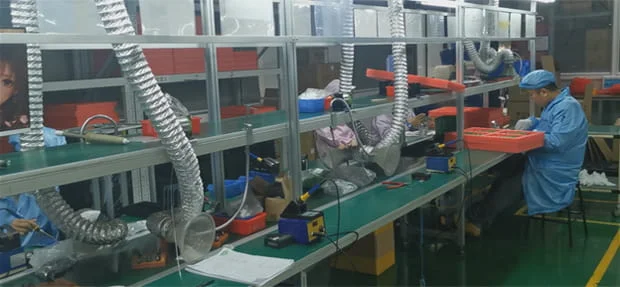
Depending on the volume of PCB assembly, THT assembly can be manual or automatic.
If it is a high-volume PCB assembly, the EMS provider such as PCBONLINE can design and make jigs to insert the leads of THT components. If it is a low-volume PCB assembly, the EMS provider manually inserts the leads.
Then the EMS provider puts the PCBA into a jig for wave soldering. The jig covers the PCBA and leaves only the THT leads and through holes exposed for tin soldering.
The assemblies are one-by-one sent into the wave soldering oven. They are preheated and sprayed with flux first.
In the wave soldering oven, there's the liquid tin that flows in waves. The areas that need soldering contact the tin waves at a specific angle for a specific time duration.
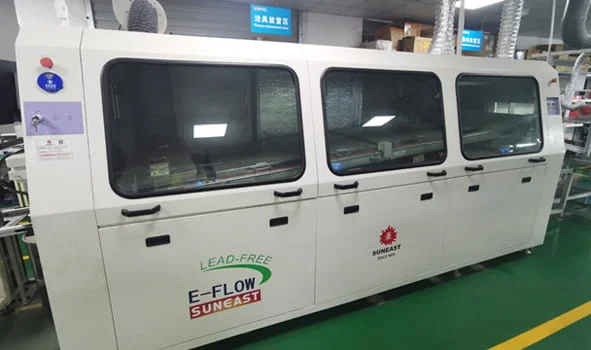
And then the EMS provider trims the leads to be 1mm to 2mm long and visually inspects the PCBA.
- Testing in the Post-Assembly Stage
At the EMS provider PCBONLINE, the OEM PCB assembly services don't come to an end once the PCB assembly is complete.
All PCBA testing and inspections are available from PCBONLINE, such as functional PCBA testing, thermal aging, tension test, metallographic inspection, hand sweat test, environment test, and salt spray test.
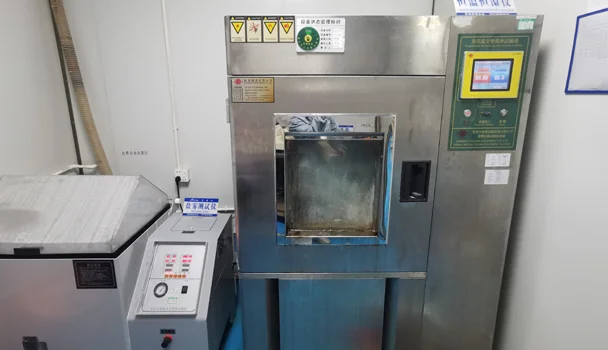
- PCBA Value-Added Services
In the post-assembly stage, IC programming, conformal coating, and PCBA box-build assembly services are available from PCBONLINE.
Box-build assembly means installing cables, enclosures, and other components required by the OEM onto the PCBA to make it a finished product.
The EMS provider then packages and ships the final products to the OEM.
Part 3: Benefits of OEM PCB Assembly
OEM PCB assembly offers several benefits for the OEM, including flexibility of production, cost saving, quality control, professionalism, and enabling the OEM to focus on core competencies.
- Flexibility: OEM PCB assembly is flexible production. The EMS provider can handle different manufacturing volumes and PCBA services according to the demands of different OEMs in different manufacturing stages.
- Cost saving: The OEM can save on PCB/PCB/box-build equipment, labor, and other costs related to in-house assembly.
- Quality control: Reliable EMS manufacturers such as PCBONLINE have rigorous quality management systems and operation codes to ensure the PCB/PCB/box-build quality. Besides, at PCBONLINE, every step has a group member responsible for quality sample checks, which is a self-check action independent of the quality control system.
- Professionalism: EMS manufacturers with expertise have rich knowledge and experience in OEM PCB assembly, ensuring the success of the assembly project.
- Focus on core competencies: By outsourcing the PCB assembly to an EMS manufacturer, the OEM can focus on R&D and marketing, which are the core competencies.
Part 4: Reliable OEM PCB Assembly Manufacturer
PCBONLINE is a one-stop OEM PCB assembly manufacturer for middle and high-end applications, including industrial, automotive, communication, computing, aerospace, defense, and consumer electronics.
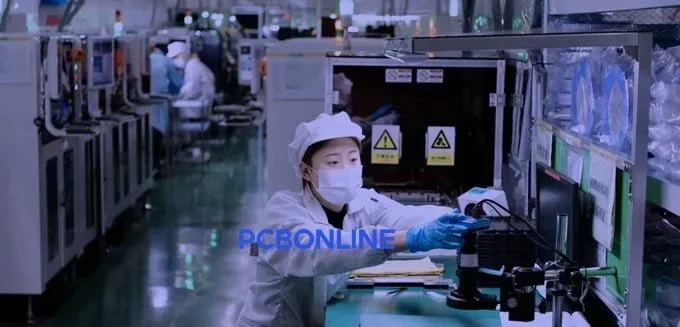
PCBONLINE is an EMS source factory manufacturer. It is a private-owned company founded in 1999. So far, it has two large advanced PCB manufacturing bases in Jiangsu and Jiangxi and one EMS PCB assembly factory in Shenzhen.
Below are some reasons for you to choose PCBONLINE for OEM PCB assembly:
- PCBONLINE provides all types of advanced PCBs and PCB assembly, including nitrogen reflow and selective soldering.
- PCBONLINE can take part in R&D in your project, optimize PCB design, and solve technical issues.
- PCB and PCBA manufacturing is certified with ISO 9001:2015, IATF 16949, RoHS, REACH, and UL.
- PCBONLINE provides one-on-one engineering support and customer services throughout your project.
- Free PCBA sample including components and functional testing for massive OEM PCB assembly.
Up till now, PCBONLINE has had many successful OEM PCB assembly cases for clients around the world, such as automotive lights, servers, COB LEDs, industrial controllers, false eyelash UV disinfection boxes, communication interfaces, etc. If you have any OEM PCB assembly needs, feel free to send your inquiry to info@pcbonline.com.
Conclusion
OEM PCB assembly is a working mode where an OEM entrusts the PCB manufacturing and assembly to an EMS manufacturer. It releases the OEM from the burden of electronics manufacturing. If you need OEM PCB assembly for the production of electronic products, choose a source factory manufacturer such as PCBONLINE, which is the most affordable and reliable.
© This article is an original work of the PCBONLINE team. Please indicate the author PCBONLINE if you reprint. If the article is reproduced without permission or indicating the author's source, PCBONLINE reserves the right to investigate the infringement.




